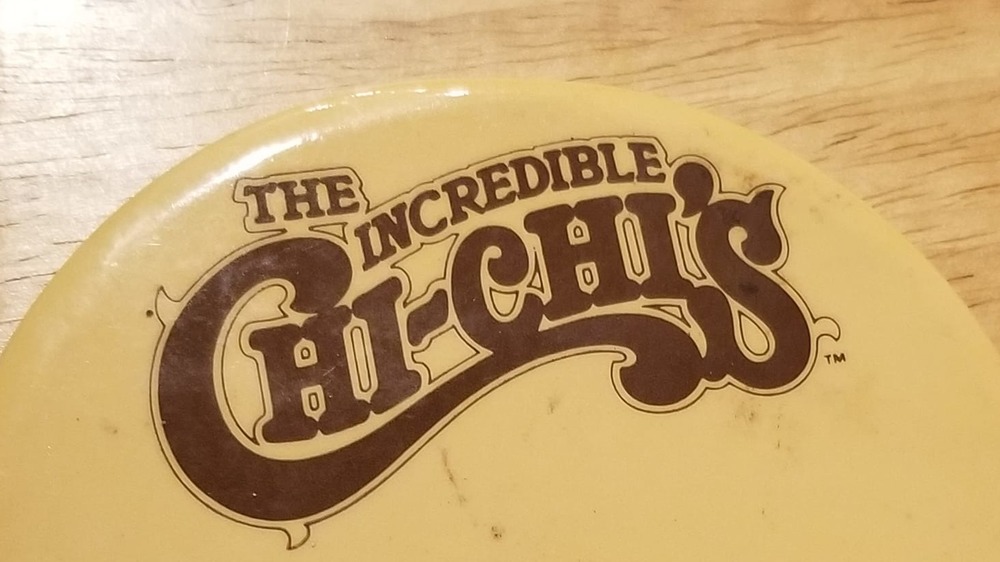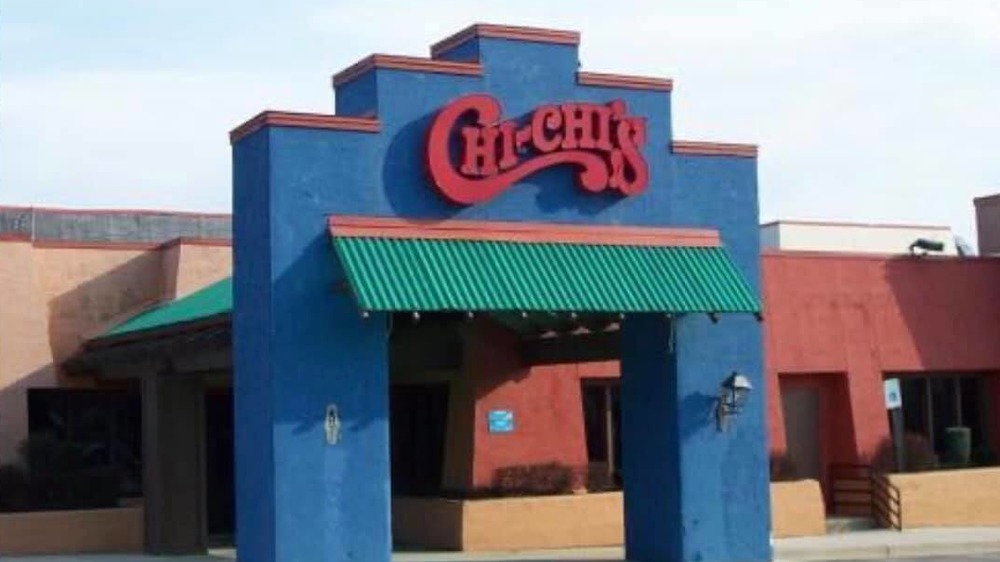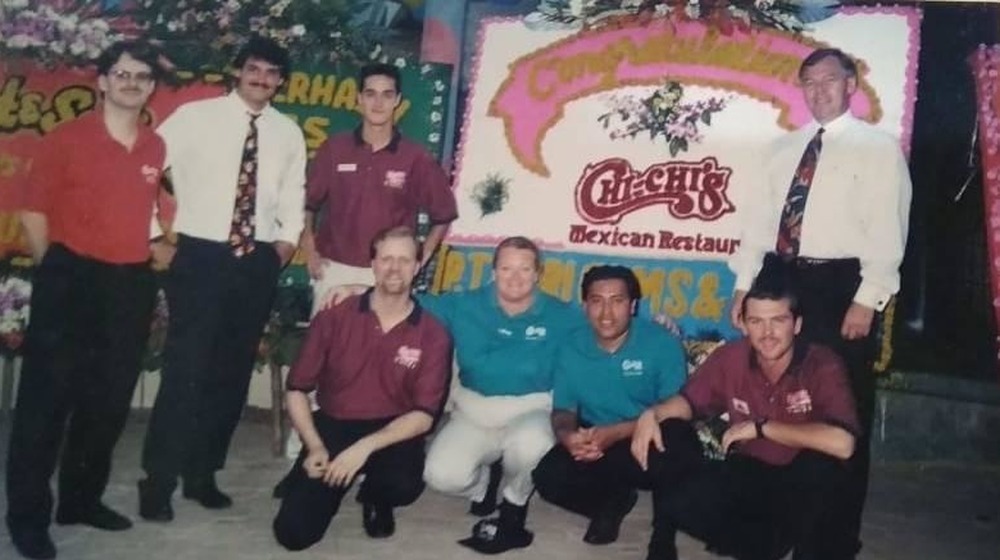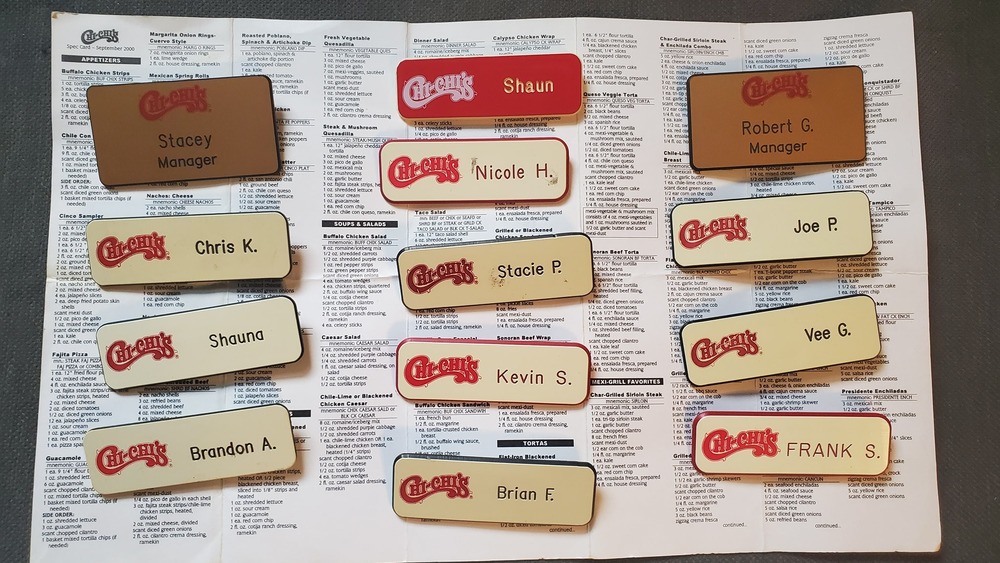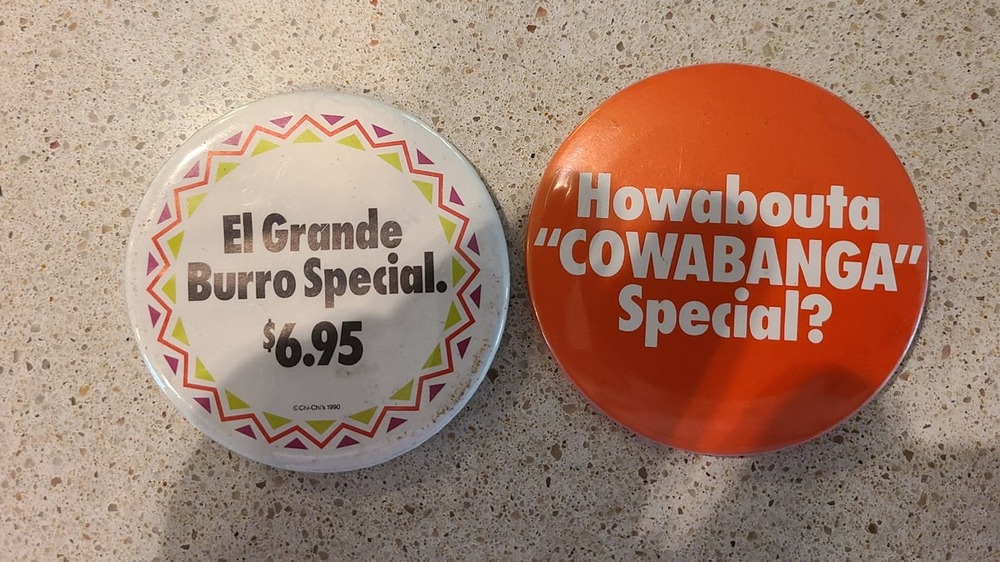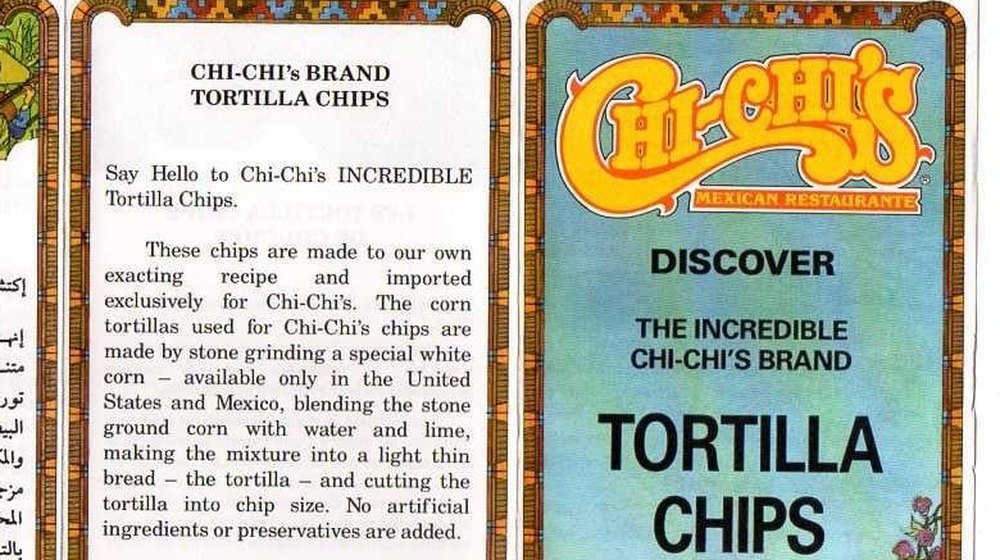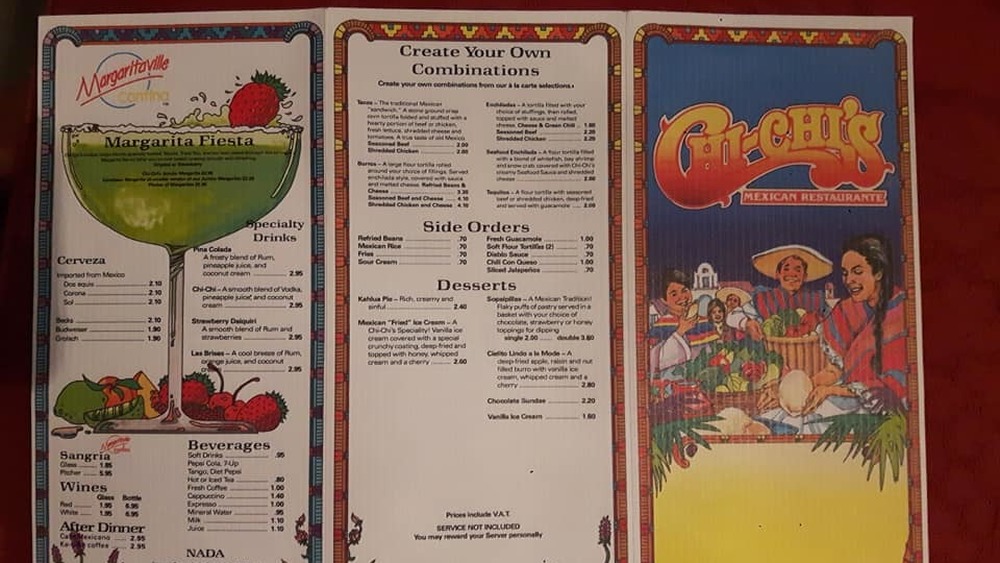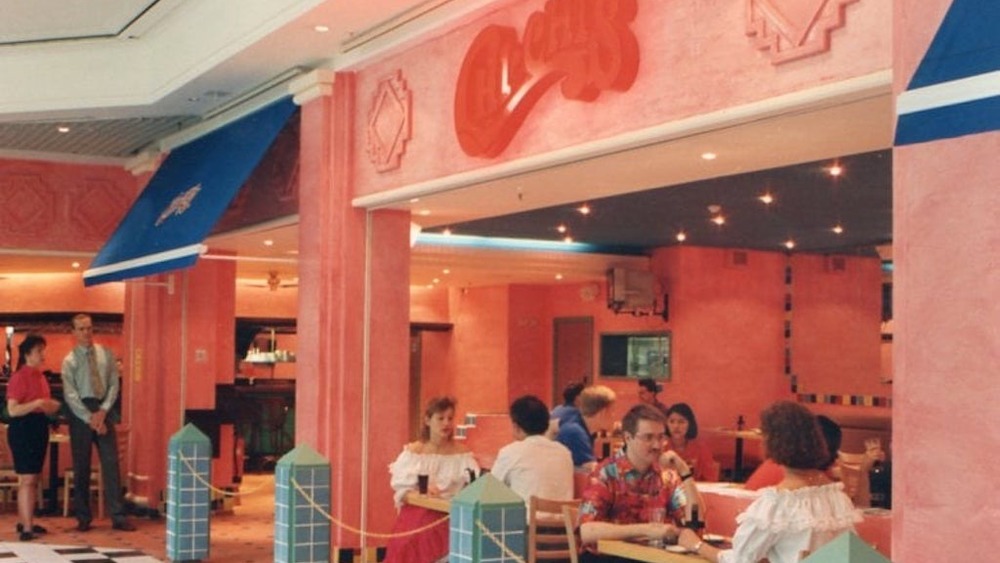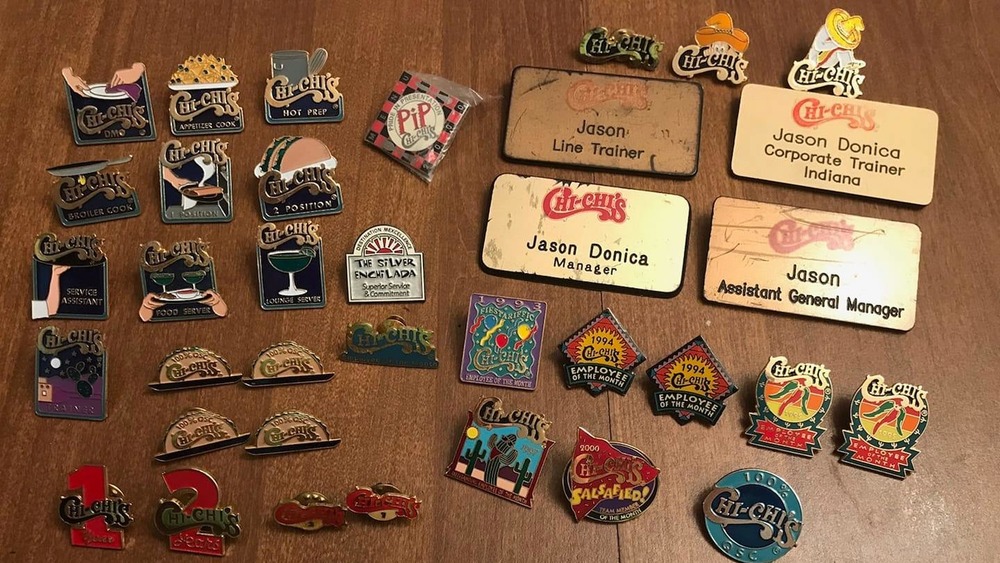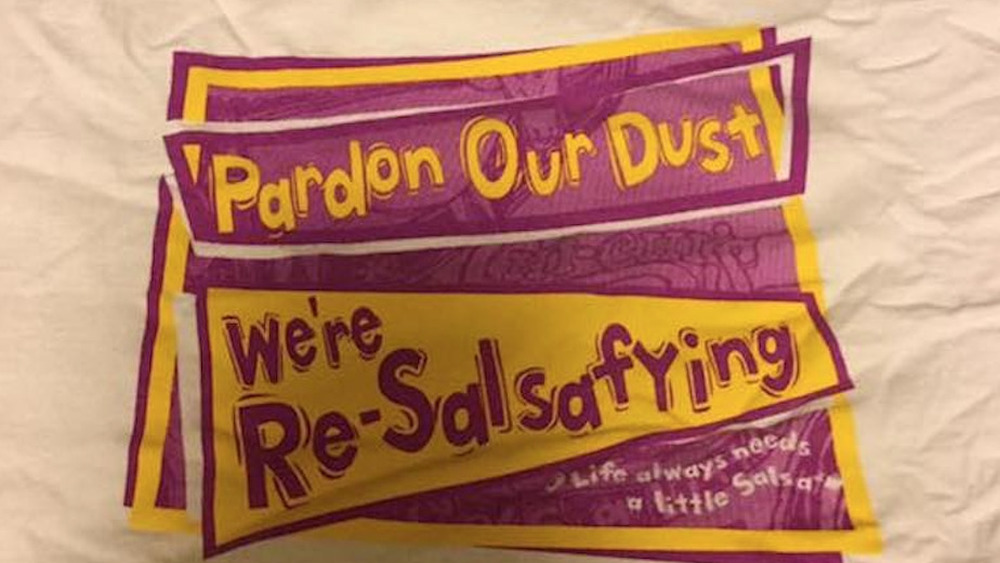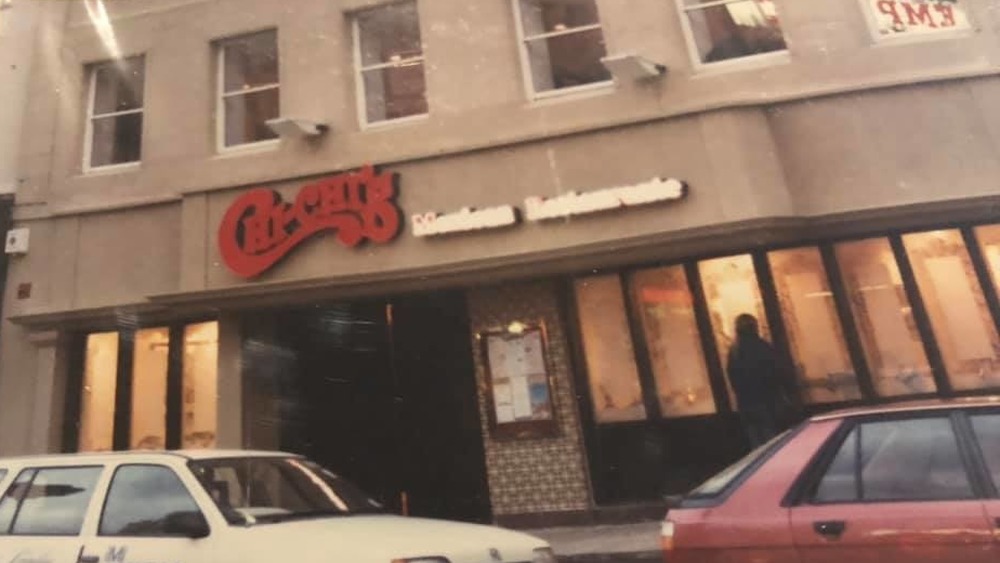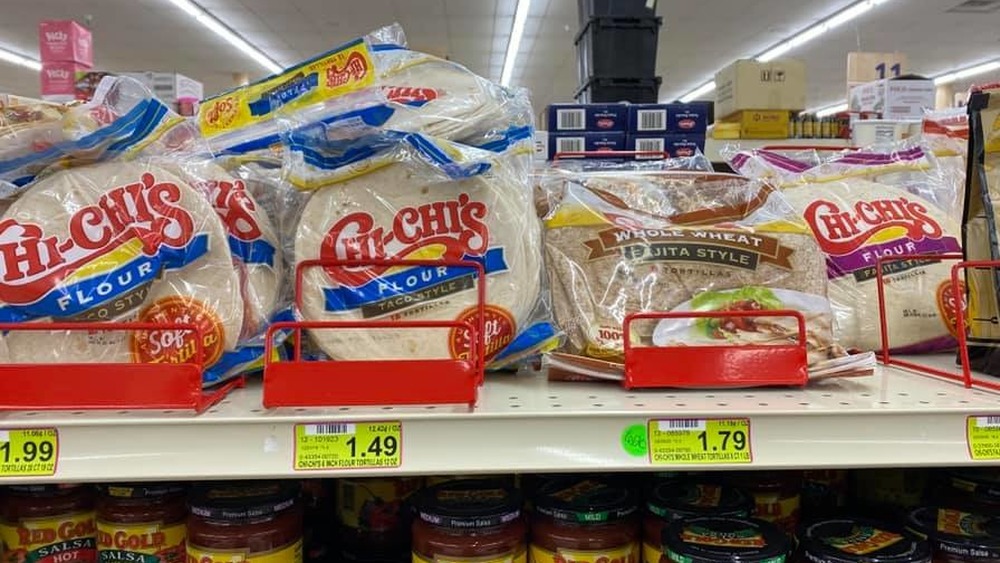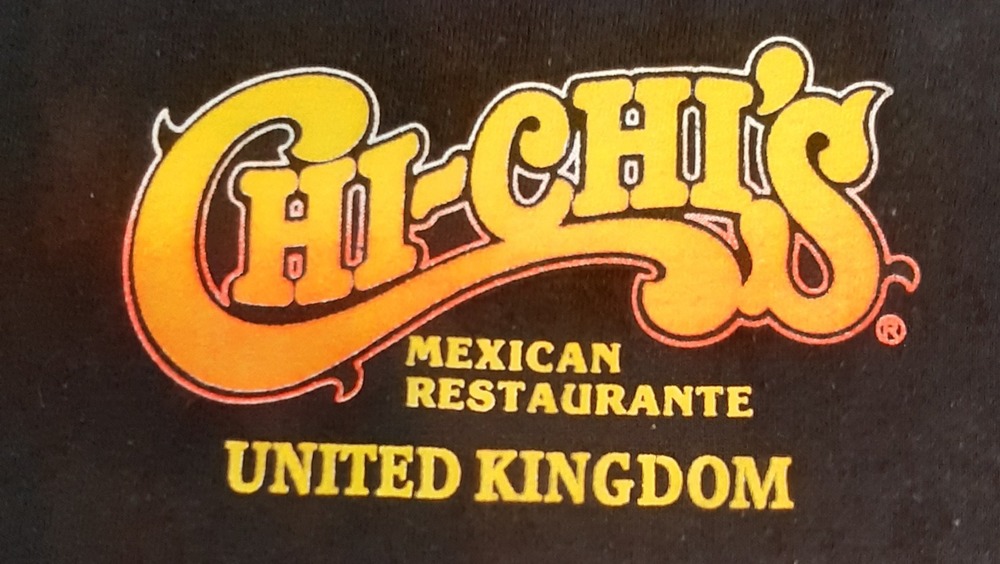The Untold Truth Of Chi-Chi's
The restaurant industry is a brutal one. With an estimated 60 percent closing in their first operating year alone, it's no surprise that few have connected with the consumer to find everlasting success. More often than not, many burn fast and bright only to have their light just as quickly burn out. That could be said for the casual Mexican chain Chi-Chi's. Once a pioneer in the industry, we likely have them to thank for the now widespread availability and accessibility of Mexican food in America. Authentic it was not, but good times were had by all. This beloved chain still has a fiercely loyal following as evidenced by this Facebook group of former employees reminiscing about the good old days.
Issues such as too rapid growth, increased competition, executive level turnover, and a very serious health scare led to the demise of the still fondly remembered chain. They are all but gone in the United States, with just a few locations remaining to this day overseas. Maybe it was the bright and colorful welcoming atmosphere, or the smell of freshly cooked tortilla chips, but memories are a funny thing. Join us for some Mexican pizza, fried ice cream, and a heavy dose of nostalgia as we explore the untold truth of Chi-Chi's.
The first Chi-Chi's opened in 1975
Let's take it back to the very beginning. It was the 1970s. Taco Bell wasn't even national at this time. If you wanted your Mexican fix, you were likely out of luck (unless you wanted to try your hand at making it in your own kitchen). A few entrepreneurs came together and decided to capitalize on the void in the market for full-service Mexican cuisine. According to Kiplinger, restaurateur Marno McDermit teamed up with former Green Bay Packers star Max McGee to open the first location of Chi-Chi's in 1975. No, it wasn't in Texas, California, or even remotely close to the border. It was in the most seemingly unlikely of places to find success in that sector: downtown Minneapolis.
Chi-Chi's served affordable Tex-Mex style food to the masses in warm and brightly lit atmospheres, with goblets of margaritas and all the chips and salsa you could eat. As with most industries, it's all timing and a heavy dollop of luck. The two struck gold, and soon the chain exploded, with first year sales clocking in at a whopping $2 million, according to Funding Universe. Taco 'bout a striking number for the 1970s. In just 10 years, there were 200 locations throughout North America, operating both company-owned restaurants as well as franchised restaurants.
There were some heavy investors behind the scenes
It takes some heavy capital to open a restaurant and properly set it up for long-term success. Luckily, Chi-Chi's had some true heavy investors behind it. Marno McDermott, a graduate of the University of Minnesota, was one of the founding partners. With an affinity for Mexican food, his first foray into the restaurant business was the small fast food concept restaurant Zapata in the 1960s. His eyes were set on something much grander, though, seeing a need for a full-service Mexican concept, and he approached former professional ball player Max McGee for the investment opportunity, according to Sports Illustrated. McGee himself was already in the restaurant business, owning the Minneapolis bar and restaurant The Left Guard. And so, using the nickname of McDermott's beloved wife, Chi-Chi's was born (via Smartyflix on YouTube).
After sweeping success the first year, the duo was then approached by a local stockbroker, John Stephens, who had the grand idea of making Chi-Chi's a national brand by franchising it, according to Reference for Business. It was Stephens who then enlisted Kentucky Fried Chicken's vice-president of concept development, Shelly Frank, to run the new franchise business. This large-scale expansion all happened within just two years of the first Chi-Chi's opening.
The quick success of Chi-Chi's spawned a slew of competitors
Things were all well and dandy for Chi-Chi's throughout the 1970s and 1980s. Once the company turned to franchising, restaurants were opening literally left and right at a rapid speed. There was relatively no competition, and this smart Mexican concept was dominating the market. By the mid-1980s, 200 Chi-Chi's locations could be found throughout the country, with most success in the Midwest (via Funding Universe).
This rapid expansion was successful at first, yielding millions in profits, but trouble was lurking. As with any success story, comes the slew of imitators looking to capitalize on a revolutionary idea. When Chi-Chi's first opened in the 1970s, Mexican restaurants were almost nonexistent in the Midwest. But by the 1980s and into the early 1990s, Chi-Chi's began seeing competition thanks to the then expanding On The Border and other restaurant chains. The chain also faced competition from fast food Mexican options that began popping up around this time. Taco Bell was now national, thanks to its acquisition by PepsiCo. Even McDonald's was dabbling in the genre of Mexican cuisine with breakfast burritos (via CNN). Chi-Chi's tried to overcome this with brand overhauls and the exploration of new markets, but the trouble was already in motion.
Chi-Chi's branding was pretty cheesy
It's safe to say, Chi-Chi's wasn't exactly known for its authentic Mexican food, but rather an Americanized version of what we now know of today as Tex-Mex cuisine. Along with the not-so-authentic food came some pretty cheesy branding that fit right into Chi-Chi's brightly colored dining rooms. It was a 365-day-long fiesta in the restaurants, which touted slogans such as "life always needs a little salsa," hawked cheap and boozy margaritas, and flaunted servers around in multi-colored eyesores for uniforms.
There were also some pretty cringeworthy moments (and accents, if we could even call them that) in the television marketing campaigns. This 1991 commercial is the epitome of kitschy, with a super gimmicky song, bizarre attempts at accents, and an odd ode to "Fri-yi-yi-yied ice cream." Ay, caramba! This "celebration of food" is all over the place and is just one of the many commercials Chi-Chi's pushed in the 1990s. We're not sure about you, but we just can't turn away from these train wrecks.
Chi-Chi's tried to trademark "salsafication"
Along with its sometimes bizarre marketing, the national chain took its often painfully cheesy branding one step further. Calling it "unique and fanciful," the chain applied for trademarking its self-coined phrase "salsafication" in 2001. Trademark law is a rather complex (and often confusing) thing, and the business must provide examples that show that the phrase is explicitly and tangibly linked to the business and the public's view of said business.
To prove the unique factor of the proposed phrase and why it was worthy of the trademark, Chi-Chi's went ahead to include it on its menu with "the declaration of salsafication." The United Stated Patent and Trademark Office ultimately denied this, citing in their decision that "salsafication" is nothing more than a clever variation of the word salsa. They further noted that the menu also included other variations of the word "salsa," deeming their proposed variant not worthy of trademarking.
Chi-Chi's emphasized freshness in an attempt to improve sales
It was a great time to be Chi-Chi's in the 1970s and 1980s. Riding the wave of success, they expanded to over 200 stores with profits in the multi-millions. There were a multitude of factors that led to their slip in sales, though, with one being the major concern associated with the real estate needed to operate a restaurant. During the high tide of the 1980s, Chi-Chi's was opening restaurants that took up a whopping 10,000 to 12,000 square foot of floor space (via Funding Universe). Profits had to remain consistently up to maintain this amount of space. Sudden growth also led to problems at the corporate and management levels. It's reported that the turnover rate was a shockingly high 80 percent for restaurant managers, leading to inconsistencies in service, food, and most importantly, the customers' experiences (via Reference for Business).
After Chi-Chi's acquisition by Foodmaker in 1988, they placed the emphasis on affordable and fresh to fight the decrease in sales. A value menu was introduced that featured meals price at just $3.99 and $4.99. They also began to make their beans, rice, and beef fresh, and this was further driven home in their new marketing campaigns. If there was ever a question on freshness, customers would encounter a fresh tortilla making machine right when they entered the establishment (via Funding Universe). Freshness was the name of the game and they did everything they could to make the consumer aware.
Chi-Chi's tried to expand with a seafood concept
Chi-Chi's had previously failed to expand in certain markets, mainly the finicky Northeast as well as the Southwest. Chi-Chi's took their newfound success and returned to the Southeast to give it another shot, this time with a fresh new concept. Papanda's Border Café was a short-lived Mexican restaurant chain they owned and operated in the Southeast. Chajita's Mexican Café was another concept they rolled out. This was a fast food restaurant that operated with an atmosphere reminiscent of a full-service dining restaurant.
Most interestingly, they even took their shot in the seafood world in 1988. G.W. Sharkey's Oyster Bar and Grill placed the focus on fresh, affordable seafood in a casual environment (via Reference for Business). While all three concepts didn't stand the test of time, they did share the same values of Chi-Chi's, which was bringing fresh food to the masses with affordable and fair pricing.
Chi-Chi's filed for bankruptcy more than once
With never-ending turnover at the tip-top of leadership, the company was an endless revolving door when it came down to its integral executive members. Unfortunately, the worst was yet to come for the once-thriving company. The struggle was real for them come the end of the 1980s, and they were eventually bought out by Jack in the Box's parent company, Foodmaker, Inc. (via The New York Times). Financially, things were starting to look up, but the restaurant had lost its way. Soon, the menus were completely devoid of the classic Mexican food they were known for, and what replaced it was figuratively watered down and Americanized food, along with stir-fry, pasta, and even taco pizza. By the early 1990s, sales were again slumping, leaders were jumping ship, and the company filed for Chapter 11 Bankruptcy (via Funding Universe).
Riddled with debt because of the company's multitude of failed expansion attempts, the company struggled on for the next decade. Attempts to regain its bearing included refurbishments, which ending up setting them back hundreds of thousands of dollars per location, as well as failed menu revamps. The clock was ticking and in 2003, under the renamed parent company of Prandium Inc., they filed Chapter 11 bankruptcy again. Chi-Chi's president at the time, Anthony Baril, was even quoted by the Los Angeles Times as proclaiming that Chi-Chi's is "burning cash at a rate that will result in them running out of free cash in the next five to seven business days."
Chi-Chi's was affected by the largest hepatitis A outbreak in the United States
This next devastating blow was the final nail in the coffin for the once thriving, now demising casual Mexican chain. Hepatitis A is a highly infectious virus, spread through food, that affects the liver and can cause severe hospitalization and even death. Hand washing and the use of gloves when preparing food can stop the spread of this food-borne illness in restaurants, but sadly, that wasn't enough to stop it at Chi-Chi's. Their emphasis on "fresh" failed them in this instance when green onions from Mexico were contaminated and brought the disease to the restaurant group's Pennsylvania area location.
In the fall of 2003, the outbreak stemmed from a Chi-Chi's location at the Beaver Valley Mall in Monaca, PA. Just over 100 victims were named in early November, and that number quickly increased to over 200, including restaurant employees and local customers. Sadly, by mid-November, three people had suffered liver failure and died. In the end, there were over 650 confirmed cases that were directly linked to the suburban Pittsburgh location, as well as four deaths from liver complications. Even as the company was in the middle of Chapter 11 bankruptcy, the courts allowed victims to settle with the company.
Outback purchased all the last remaining US Chi-Chi's locations in 2004
By 2004, Chi-Chi's had dwindled to just over 60 restaurants in operation in the United States. Multiple bankruptcies, constant changes at the executive level, and the devastating hepatitis A outbreak proved far too damning for the company — which was once named American's Favorite Mexican Restaurant — to ever come back from. In the summer of 2004, Outback Steakhouse bid $42.5 million, according to USA Today, to purchase the remaining Chi-Chi's properties. This was more of a real estate move as opposed to buying the Chi-Chi's branding, as the purchase did not include the company name, its operations, or any culinary practices. By September of that year, all of the United States Chi-Chi's locations closed for good.
Outback's initial plan was to change the majority of locations to restaurants under their group, which included Bonefish Grill and Fleming's Prime Steakhouse (via USA Today). That plan didn't exactly come to fruition, but Outback still benefited just fine financially. Outback sold the majority of the locations to the real estate investment company, Kimco Realty Corp., according to The Journal Times. If you have an affinity for the past, there's even a website dedicated to abandoned former Chi-Chi restaurants.
Hormel bought the rights to use the Chi-Chi's brand
The Chi-Chi's brand lives on in our hearts and also on the shelves of your local grocery store. Hormel Foods, the company also behind Spam, purchased the licensing rights to produce goods under the Chi-Chi's name in 1987. The acquisition proved to be an instant success. By the early 1990s, according the Chicago Tribune, Chi-Chi's salsa was earning them over $6o million annually. Signature products included a line of salsas as well as chilies. The brand is now available nationwide with distribution to major grocery chains as well as big box retailers like Walmart.
Hormel's Chi-Chi's line has since expanded now to include a wide variety of tortilla chips, including flavored, as well as taco mixes and seasonings, a variety of salsas and queso, and a line of tortillas. If you need to get your fix, the fiesta lives another day thanks to Hormel!
You'll have to go overseas if you want to eat at a Chi-Chi's
With a passport and an international plane ticket, you could have the chance to revel in the sights, sounds, and smells of our dearly departed Chi-Chi's. While the Mexican chain is nothing but a thing of the past in the United States, maybe even a funny anecdote at a party, there are several locations still in operation throughout the world, according to Kiplinger. The multi-colored, lively restaurant and questionable Tex-Mex cuisine is still embraced in Europe, the United Arab Emirates, and Kuwait.
